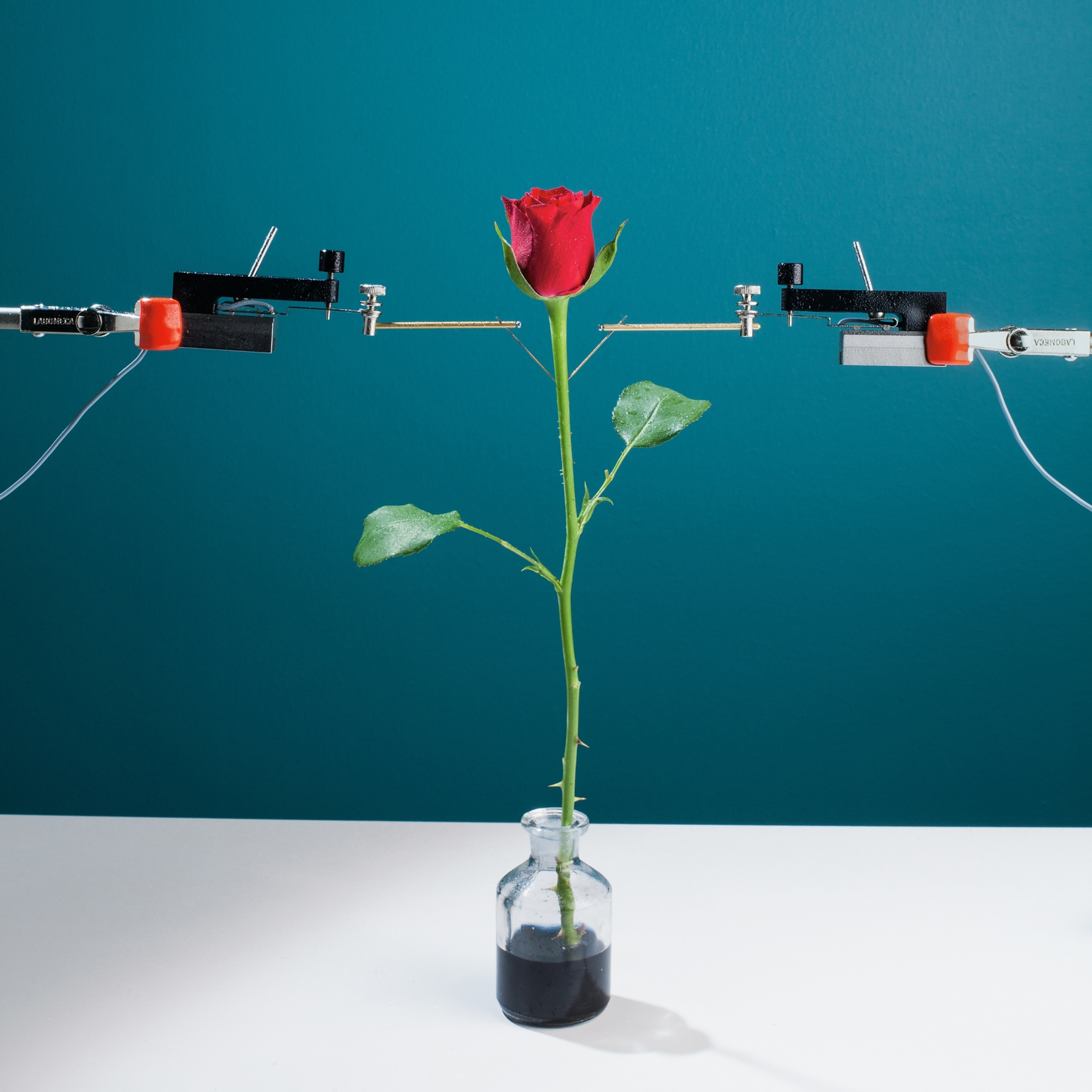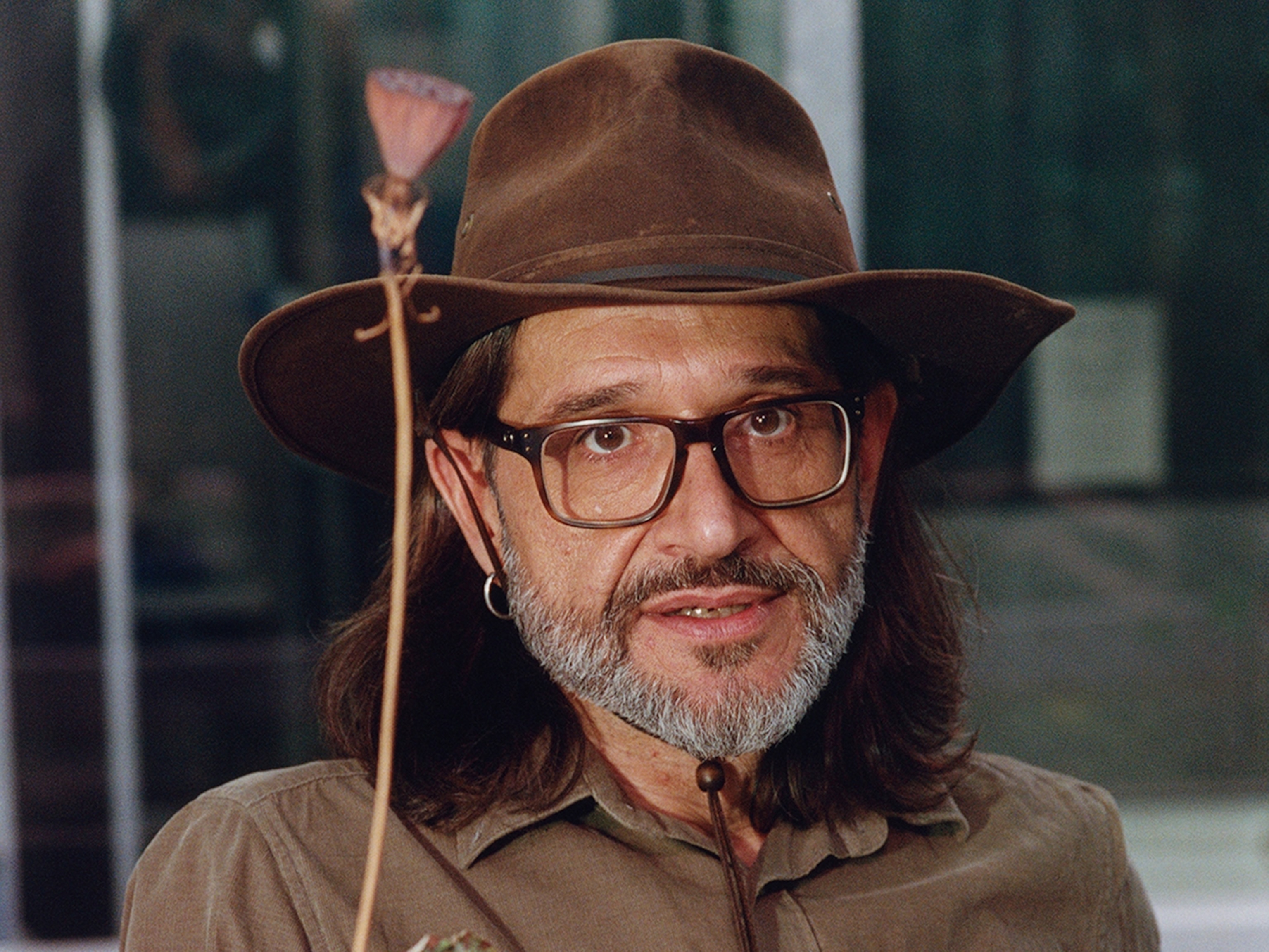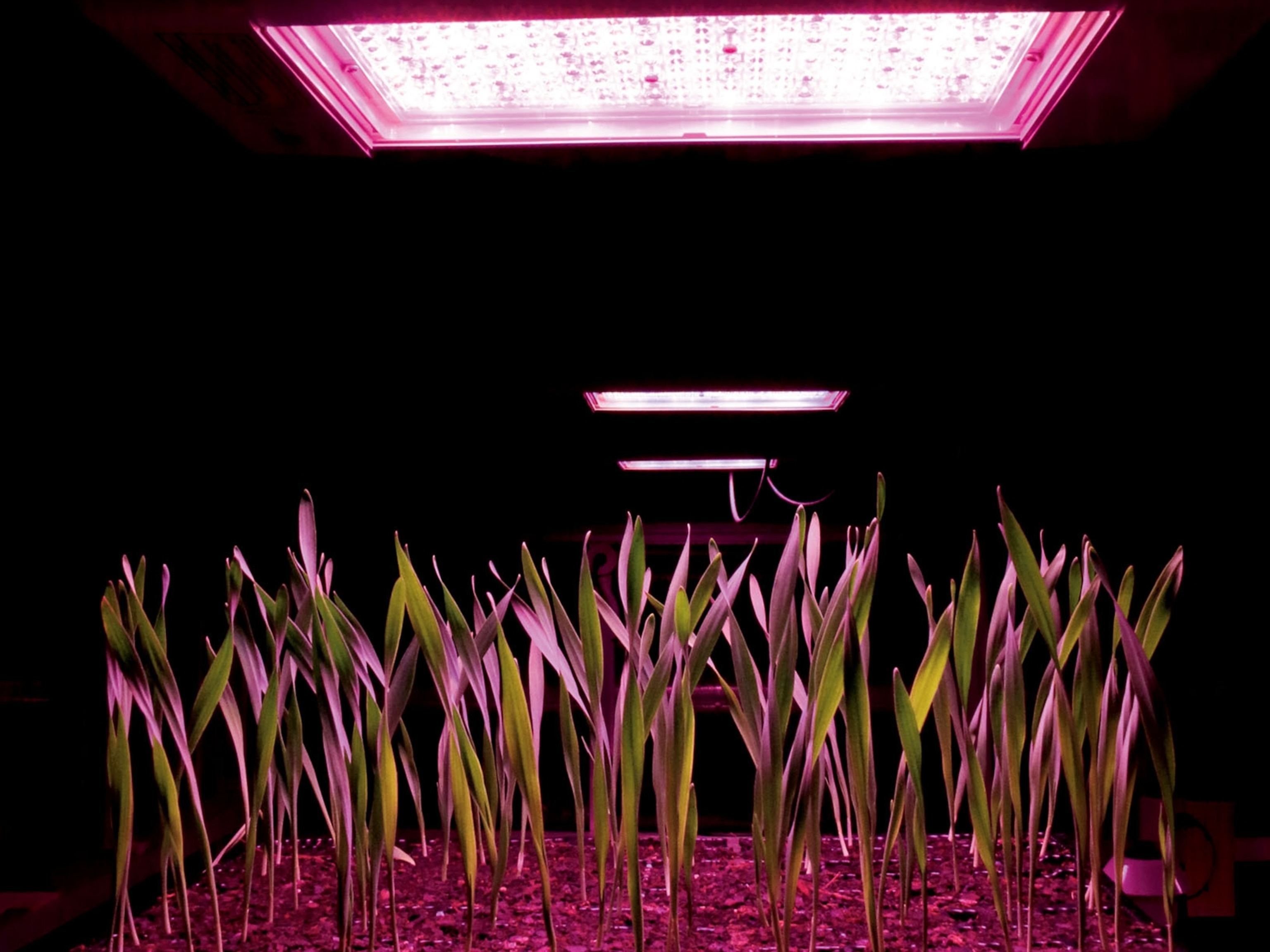
The Dr. Frankenstein Making Electronic Plants
How a rose goes from elegant to electric
Scientists in Sweden have taken ordinary roses, from a local flower shop, and electrified them by incorporating circuits into the plants’ living tissue.
The transformation is not as far-fetched as it may seem. A plant’s vascular system transmits chemical signals much as electronic circuits transmit currents. To merge the two, physicist Eleni Stavrinidou and her colleagues placed the cut end of a rose into a diluted polymer solution. Once absorbed, the polymer reorganized itself into an electrical wire that extended through the xylem, the system of water transport channels inside the rose’s stem. Add voltage, and the plant could conduct electricity.
Why would anyone besides a green-thumbed Dr. Frankenstein want to create an electronic plant? Stavrinidou says this technology could produce sensors able to analyze and alter plant physiology at the cellular level. Another possibility: harvesting electricity from the process of photosynthesis. Someday, says Stavrinidou, “you may be able to plug your phone into a plant.”




